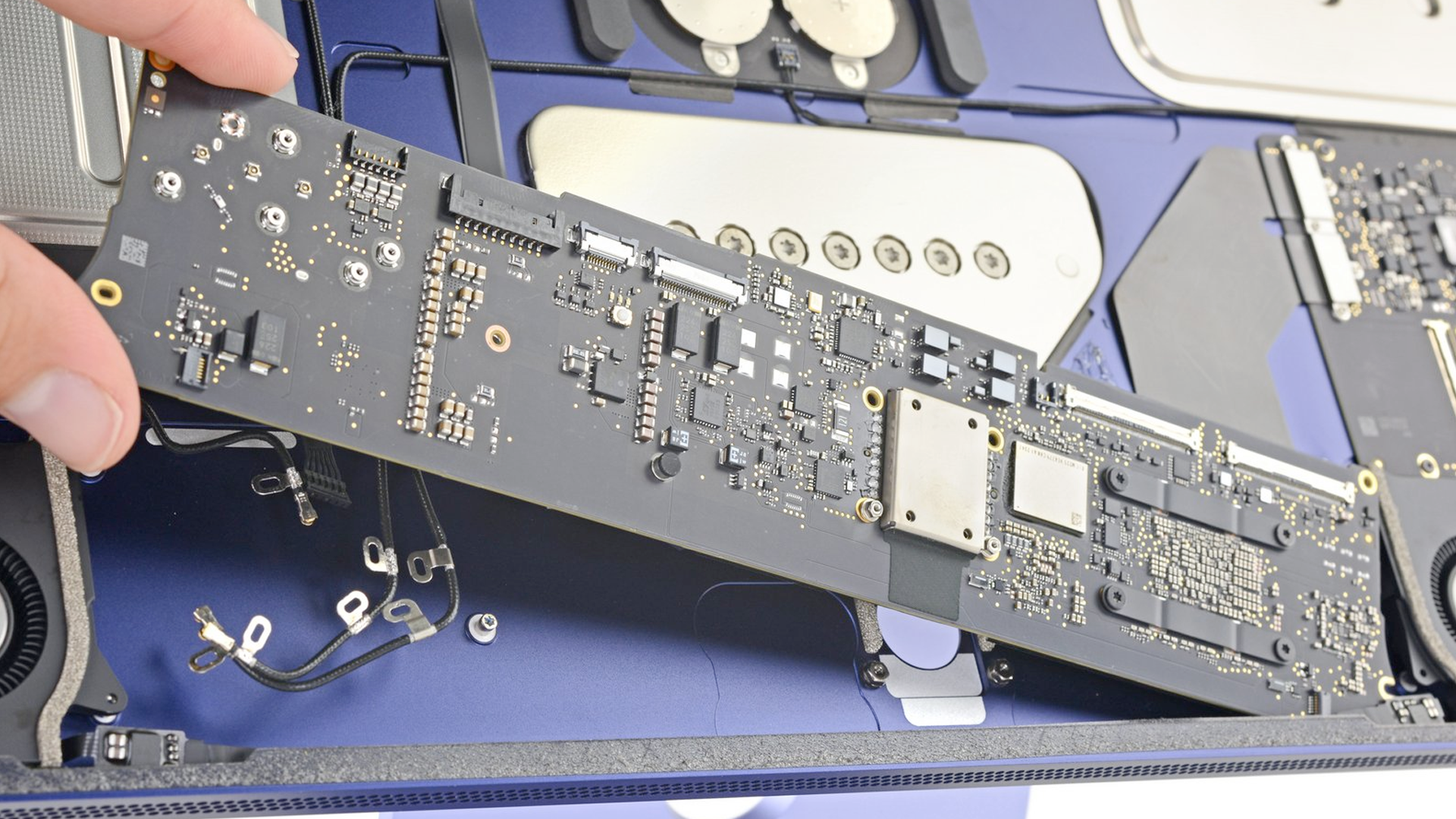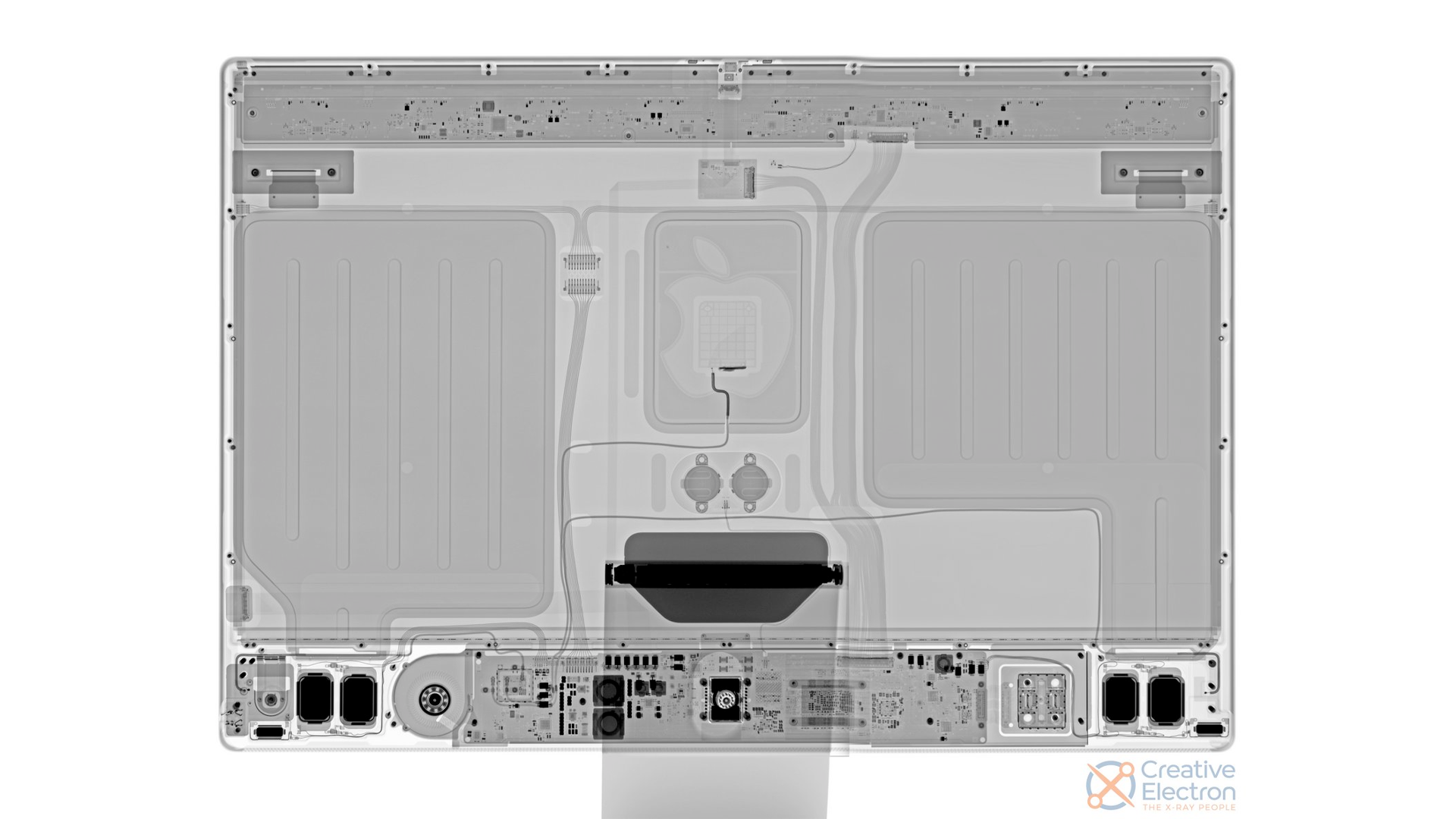Unlike the M1 MacBook Air and MacBook Pro, the newly-released 24-inch M1 iMac sports a bold new design with an impressively thin profile and a colorful exterior. Now, an iFixit teardown reveals that the iMac's makeover isn't just skin deep, although there's still a few hints of the past tucked behind the glass.
Anyone who's had the pleasure of prying open an iMac is familiar with one of its greatest legacies---foamy glue. iFixit found that Apple is still using its classic foamy glue to hold the iMac's display in place, making the computer way easier to open than an iPad.
But once you break past the glue, you start to notice some changes. For one, the iFixit team found that there are several screws near the egde of the iMac's display, which make opening the device a bumpy (but not dangerous) ride. Apple also combined the iMac's large bottom bezel (or "chin") with the display, so both components come off at the same time, making for a quick disassembly.
Behind this chin lives most of the iMac's hardware, including the logic board, speakers, and fans. And that's where the iMac looks a lot different from its predecessors. The M1 logic board is outrageously, ridiculously small. This shouldn't come as much of a surprise, as it's essentially the same logic board that's in the MacBook Air, MacBook Pro, Mac Mini, and now, the iPad Pro. But compared to past models, it's a huge change.
The logic board itself also has a few quirks, including a small white button with three LEDs. This button could be for diagnostics, similar to how LEDs were used for diagnostics on older models of iMac. Other mysterious shapes appear in iFixit's iMac X-ray, like two circular objects (perhaps coin cell batteries) located under the Apple logo.
iFixit left us on a cliffhanger, pausing its teardown after pulling out the iMac's logic board. The second part of the iFixit teardown will go online soon, offering insight into the new Magic Keyboard's Touch ID sensor (which looks like an old iPhone home button), the speakers, and the weird circles seen in the X-ray. More importantly, the second part of this teardown will include a repairability score for the new iMac---hopefully it does better than the 2020 model.
Source: iFixit


